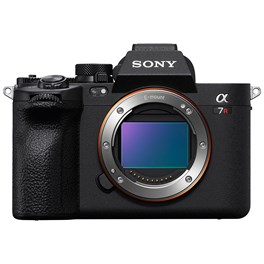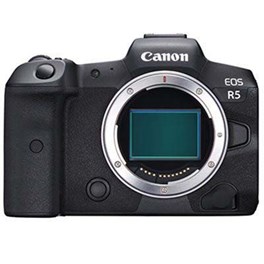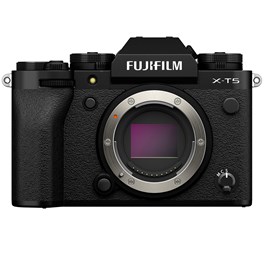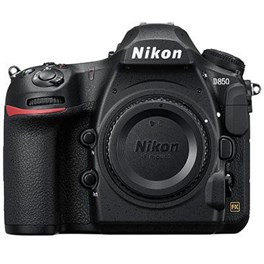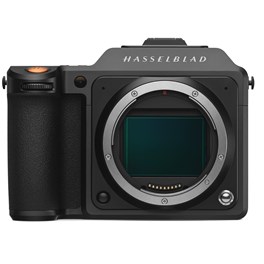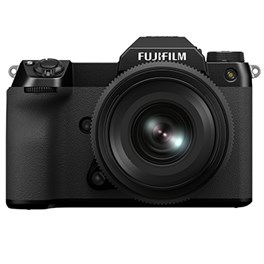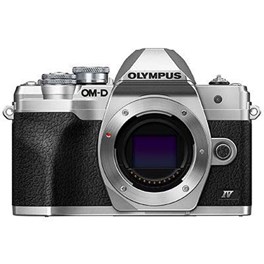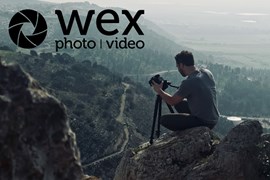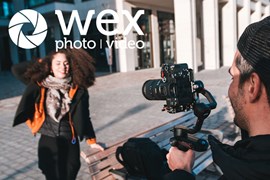
This guide is here to help you find the best camera for portraits. Creating stunning pictures of people is a richly rewarding art, but there are a few things you need to factor in when buying kit for it. A good portrait camera and lens combination will have different qualities than one for, say, landscapes, architecture, motorsport racing or wildlife.
Here are the key things you’ll need to think about when choosing a camera for portraits.
Sensor size - Larger sensors have many advantages in terms of image quality, delivering better dynamic range and high-ISO performance. What’s especially interesting for portrait shooters though is that a larger sensor allows for a narrower depth of field, meaning you can more effectively isolate a pin-sharp subject against a blurred background. However, larger sensors also come in more expensive cameras, so it’s a matter of weighing your needs against your budget.
Resolution - Quite simply the number of pixels on a sensor. Ideally, for portraiture you want a fair few megapixels to play with, particularly if part of your process or business is going to be offering prints of your images. Big megapixel counts deliver more detailed images, but also require your focusing to be dead-on, and your lenses to be as sharp as possible. Speaking of which…
Lens selection - Getting the right lens is of critical importance in portrait shooting, as you need a generous maximum aperture to create an image with a sharp main subject and an artfully blurred background. This means you generally need to opt for an interchangeable-lens camera, as compacts won’t have big enough apertures, and also means you need to think carefully about the lens options you’ll have available, which we’ve kept in mind when making our choices for this guide. You can see our dedicated guide to the best lenses for portraiture here [link].
Eye AF - In portraiture, focusing sharply on the eyes is critical for successful pictures. Your autofocus and burst rates don’t need to be as mind-blowingly fast as they do for wildlife and sports photography, but with that said, having a camera that can accurately pick out and keep focus on a person’s eyes will make your life a lot easier.
With all that said, let’s count off the best cameras for portraits you can buy in 2024…
Quick Navigation
Best Mirrorless camera for portraits
With high-resolution sensors, class-leading stabilisation and the next generation of autofocus, the best mirrorless cameras are an ideal choice for portrait shooting. Whether you go with a full-frame sensor or a more affordable model with a smaller size of sensor, you’ll be spoiled for choice. Sony is currently the market leader in terms of raw megapixels, thanks to its top-of-the-line A7R cameras and their 61MP chips, but don’t count out rival manufacturers like Canon and Fujifilm. We’ve included a broad selection to give you plenty to think about.
When buying a mirrorless camera, you also want to think about the lens system you’re buying into. Sony arguably has an advantage in full-frame mirrorless terms simply because its system has been around longer than many others. However, Canon and Nikon allow DSLR lenses to be adapted to their mirrorless cameras with full functionality, opening up a wealth of possibilities. And while Fujifilm X doesn’t have as many lenses as other systems, it has something of a speciality in ultra-sharp, large-aperture prime lenses that are perfect for portraiture. So, let’s look at the options.
Sony A7R V Digital Camera Body
Building on the A7R IV, the Sony A7R V sports the same powerful features and adds some new ones. The A7R V captures stunning 61MP photos as well as amazing 8K video. Thanks to the BIONZ XR processor, AI realtime autofocus with 693 phase-detection points means fast-moving subjects will always be rich with detail. With smart video and design features, the A7R V sets a new high bar in the A7 series.
£3,699.00 View
Pros:
- Stunning 61MP back-illuminated sensor
- Subject-detection autofocus
- Huge range of sharp FE primes
Cons:
- No resolution upgrade over A7R IVA
- Sensor demands the very best lenses
The latest in Sony’s high-resolution A7R mirrorless series, the Sony A7R V gives you 61 megapixels to play with on a back-illuminated full-frame sensor. Now, granted, this was also true of the previous camera in the series, the Sony A7R IVA, so what’s new with this edition?
Sony has outfitted this newer mirrorless camera with new processing engines that make its operation faster and more powerful than ever. Crucially, these enable the use of the hot-ticket camera feature of the last couple of years – AI-powered subject-detect focusing and exposure systems. The A7R V can recognise human shapes, faces and eyes with incredible reliability, and track humans in a variety of poses and positions. It can find eyes even when they’re barely visible, and you can dial into the settings to focus on eyes and nothing else, if you want.
For portraiture, the Sony A7R V is a dream – as was the A7R IVA. So if you can live without next-gen autofocus and want to save some cash, the older camera is definitely worth consideration too.
Canon EOS R5 Digital Camera Body
Free 3LT Tripod worth £300
Truly shaking up the market, the Canon EOS R5 is packed with new technology and major improvements that sets it aside from its competitors. The Canon R body has been designed for professional photographers and videographers alike, allowing you to elevate your practice to the next level. It's been equipped with an all-new 45MP CMOS Image Sensor & DIGIC X Processor that is capable of incredibly detailed 45MP stills and 8K video footage. Combining Canon's Dual Pixel CMOS AF system and a blisteringly fast 20fps mechanical shutter, you'll be able to accurately capture every moment of the action with precision. Then, there is a game-changing new addition which is a Canon first: The R5 is the very first Canon camera body to feature a 5-Axis IBIS system that is compatible with the RF and EF optically stabilised lenses; producing shake-free and smooth video footage. It's a true marvel of the photographic world.
£3,799.00 View
Pros:
- Class-leading image quality
- Sophisticated in-body image stabilisation
- Huge range of EF and RF lenses
Cons:
- Not many for stills…
- … though video is limited
The Canon EOS R5 is still arguably the finest stills camera the firm has yet produced. Its full-frame 45MP sensor produces dazzling images, full of detail and punching with rich colours. Powered by a processor inherited from the pro-spec EOS 1D X Mark III DSLR, the EOS R5 delivers fast speeds and excellent autofocusing in a variety of situations – the Eye AF in particular will be of interest to portrait photographers, and it is impressively accurate and tenacious.
The EOS R5 also introduced an effective in-body image stabilisation system to the world of Canon full-frame, and it provides highly effective compensation for slow shutter speeds when light levels get low. It can work in tandem with both RF and EF lenses (the latter via an adapter) to enhance the effect still further. For stills, there are very few reasons not to love the EOS R5 – but if you’re also planning to shoot video, you may want to take its infamous recording time limits into account.
Fujifilm X-T5 Digital Camera Body - Black
Fujifilm’s X-T5 Digital Camera Body is a step above from the X-T4 that is more akin with the flagship X-H2 camera. Capture stunning images with the 40MP X-Trans CMOS sensor and powerful X-Processor 5. For videographers, the camera can capture gorgeous 6.2K, 10-bit 4:2:2 video and externally record Apple and Blackmagic RAW codecs. With ease-of-use features too, this is a small but mighty camera.
£1,449.00 View
Pros:
- Sublime JPEG quality
- Excellent portrait lens options
- Top-class handling
Cons:
- You’ll get a shallower depth of field on full-frame
- … that’s about it!
The Fujifilm X-T5 is a class-act all-around, and an ideal choice for portrait photography. Its considerable resolution bump to 40MP, compared to 26.1MP on the X-T4, makes it a compelling choice for portrait photographers, and it’s a wonderful camera to use thanks to the system’s resolutely analogue-style handling. Dials on the top plate and aperture rings on the lenses? Yes please.
Images from the X-T5 look absolutely gorgeous. You get exceptional quality in RAW at most settings, of course, though if you prefer to shoot in JPEG and take advantage of the creative Film Simulation modes, the X-T5 is great for that too. Its autofocus system is an AI-powered subject-detect system, and while it’s not as powerful as those you’ll find on the likes of Sony and Canon, it’s more than enough for portrait shooting.
There aren’t many flaws to this camera as far as portraits are concerned. Full-frame sensors will give you shallower depth of field, but let’s not get carried away– APS-C gives you plenty, and the superb selection of large-aperture lenses for X-mount more than makes up for it.
Best DSLR for Portraits
DSLRs make for excellent portrait cameras. Even though they are typically a little heavier than mirrorless cameras, their deep handgrips often make them easier to operate one-handed, which can be useful if you’re exploring creative shooting angles. Many photographers simply can’t do without the immediacy of an optical viewfinder that a DSLR provides. Others appreciate their extended battery life, with CIPA ratings often running into the thousands of shots per charge (and CIPA ratings are conservative estimates).
There are good DSLRs for portraits at all levels, whether you want a high-end pro-spec camera, or something that’s pitched and priced a little more towards enthusiasts. Another advantage of DSLRs, especially those by Canon and Nikon, is that they use lens mounts that span across decades of photographic history. So as well as the newest, fastest lenses, you can also explore the world of vintage analogue lenses to give your portraits an altogether different feel.
Nikon D850 Digital SLR Camera Body
Save £250, was £3249
Introducing, the Nikon D850, a photographic workhorse that has been equipped with a huge 45.7 megapixel sensor that will not disappoint. The 45.7 megapixel back-illuminated, full-frame CMOS sensor and extended battery life will keep up with all any photographic adventure you can throw its way, from the studio photo shoots to the remotest places on Earth. The tough and rugged magnesium-alloy build and all-weather sealing allow you to take its power wherever you want to go. The stunning image quality and impressive performance of this camera makes it the ultimate choice and will continue to be a game changer for years to come.
£2,799.00 View
Pros:
- Terrific image quality and detail
- Extended battery life
- In-camera batch RAW processing
Cons:
- Quite big and heavy
- AF suffers in Live View
Best DSLR ever made? You could find no shortage of photographers who’d argue that case. The Nikon D850 is a workhorse camera that just shoots and shoots, and does so in glorious 45.7MP detail thanks to its full-frame back-illuminated sensor. All the classic advantages of DSLRs are present and correct – the D850 has a weather-sealed body, enviable battery life and a big, beautiful viewfinder. There are plenty of other useful features too, including dual card slots – one for XQD/CFExpress, one for SD UHS-II. But more than that, it’s a camera that just feels great to use – one you can trust to nail the shot, time and again. Being able to batch-process RAW files in-camera is handy too.
It’s not a light camera, and if you’re using it handheld for an extended shoot, you’ll be keenly aware of the weight. Also, be aware that the AF speed does suffer if you’re using Live View with the LCD rather than composing in the viewfinder.
Canon EOS 90D Digital SLR Camera Body
The Canon EOS 90D comes as the upgrade to the popular Canon 80D. The 80D became a go to camera for both professionals and amateurs because it was such a versatile system, so this upgrade is sure to impress any level of photographer. It features a larger 32.5 megapixels APS-C imaging sensor that will produce some incredible detailed photographs and video footage. Like the 80D, the 90D has been designed for speed; catering to sports and wildlife photographers - Or anyone who has fast moving subjects. It's also capable or capturing some stunning 4K footage and of course, features Canon's EF-S mount, meaning there are a huge range of compatible lenses for you to choose from. Take a look at the impressive list of features this camera has!
£1,299.00 View
Pros:
- Generous 32MP resolution
- Highly accurate metering sensor
- Excellent optical viewfinder
Cons:
- Only one card slot
- Quality drops sharply beyond ISO 1600
A highly effective argument for the continuing relevance of enthusiast DSLRs, the Canon EOS 90D is a solid choice for portrait shooters who don’t quite have the budget for a pro-spec camera. Its APS-C sensor boasts a resolution of 32.5MP – a cut above most cameras at this level, which tend to hover around the 24MP mark. Thanks to its 220,000-pixel RGB +IR metering sensor, the Canon EOS 90D has an impressive ability to nail accurate exposures in all manner of different lighting conditions, and DSLR enthusiasts will also appreciate its optical viewfinder, which is a textbook example of the type.
One thing to be aware of is that the EOS 90D only finds room for a single card slot. This isn’t an absolute deal-breaker for portrait shoots, where it’s relatively easy to swap cards, but all the same, you may want to invest in a high-capacity SD card to avoid breaking the flow of shoots too regularly.
Best Medium Format Camera for Portraits
Large-sensor medium format cameras are tricky to master – but they have the potential to produce absolutely stunning portraiture. The big megapixel counts require pitch-perfect focusing and absolute rock-steady camera work (you’ll want a tripod at your disposal), while the large sensors deliver a distinctive look with unparalleled depth and dynamic range. For creating dazzling shallow depth of field, with the main subject absolutely pin-sharp and the background beautifully defocused with sublime bokeh, a medium format camera is the best option on the table.
It used to be the case that medium format cameras were so big and expensive that only a small niche of photographers had any interest in them. However, the game has changed thanks to Fujifilm and Hasselblad. Nowadays, medium format cameras are much more affordable than they used to be, and portable enough to be used hand-held.
Medium format is a fantastic choice for portraits. Here are our favourite options.
Hasselblad X2D 100C Medium Format Digital Camera Body
The Hasselblad X2D 100C features innovative improvements over the X1Ds. This medium format mirrorless camera has a powerful 100MP Back-Side Illuminated CMOS sensor that reduces noise and improves overall image quality. It also sports In-Body Image Stabilisation and an improved OLED EVF. With other features, such as internal SSD storage and a tilting display, the X2D is a compact but powerful tool.
£7,369.00 View
Pros:
- New standard of 100MP imaging
- Near-perfect ergonomics
- 1TB of built-in storage
Cons:
- No video
A brand new release that has turned plenty of heads, the Hasselblad X2D 100C is a class-leading medium format camera. That “100” in the name refers to its 100MP sensor, just as it does in the Fujifilm GFX series, and having all that detail at your disposal makes you feel, frankly, godlike. You have to crop into images to an absurd degree before noticing any pixelation at all, and this gives you enormous compositional flexibility. The autofocus is excellent, with 896 phase-detection points at your disposal, and you’ll probably find yourself engaging with the stabilisation system quite frequently if you shoot hand-held. Suddenly, slower shutter speeds become possible, and you don’t have to worry quite so much about all those pixels.
The ergonomics of the camera are just right – it feels fantastic to use. Plus, while 100MP files will eat through data, it provides 1TB of internal storage as well as the CFExpress card slot, giving you a bit more breathing room.
Fujifilm GFX 50S II Medium Format Camera Body
Pushing the boundaries of technology, Fujifilm’s GFX 50S II is equipped with a powerful 51.4MP medium-format sensor that is capable of capturing incredible levels of detail and boasts improvements across the board over its predecessor. The 50S II features a strong and reliable IBIS system and upgraded AF system that together, further increase the overall image quality and performance of the camera.
£2,599.00 View
Pros:
- Sensor design boosts apparent sharpness
- AF upgraded with Eye Detection
- Not too physically heavy, considering
Cons:
- GFX 100S better shows off the system’s capabilities
The Fujifilm GFX 50S II uses a 51.4MP sensor with a clever, specialised design that maximises the sharpness of images. The trick is in small, on-sensor light-collecting microlenses, which increase the gap between adjacent pixels, and in turn, boost the light resolution of each individual pixel. If that all went over your head – don’t worry. The upshot is that images taken on the GFX 50S II look sharper than ever, making it a perfect choice for portraits.
This isn’t the only aspect of the camera that Fujifilm has paid close attention to. The relatively lightweight design and mirrorless-style handling that made the GFX series famous is all present and correct here, with effective stabilisation that makes the camera more useable hand-held. While Fujifilm does have a 100MP option in the form of the GFX 100S – which will arguably better show off the capabilities of GFX lenses – the GFX 50S II is an outstanding camera in its own right that will deliver sublime portraits in the right hands.
Best Budget Camera for Portraits
Portrait photography isn’t just for those with deep pockets. While we’ve seen plenty of high-end professional portrait cameras in this guide, there are also plenty of options for those who have comparatively little to spend – and you don’t just have to restrict yourself to point-and-shoots. Since lens choice is so important in portrait photography, we’ve picked out a selection of interchangeable-lens cameras that will produce stunning portraits without breaking the bank.
Working to a budget is all about being smart within your limitations and maximising the amount you get for your money. While the cameras we’ve listed here can all be bought new, we’d also recommend checking out our constantly changing selection of Used cameras, as this is the best way to pick up a professional-spec camera without having to pay professional prices.
For now though, let’s look at the best budget cameras for portraits – to shoot perfect pictures of people without spending a fortune.
Olympus OM-D E-M10 Mark IV Digital Camera Body - Silver
The Olympus OM-D E-M10 Mark IV is a compact, lightweight and impressive camera body that is designed with travelling and mobile creatives in mind. It features a redesigned grip, faster and more precise AF, and powerful 5-axis image stabilisation which together allow you to have a steady hand and be able to capture the action in front of you in stunning detail without camera-shake. It comes with a useful flip-down LCD monitor which makes for well-composed selfies and vlogs. Equally, it has a high-definition EVF that provides you with real-time settings and a crystal clear image.
£649.00 View
Pros:
- Effective 5-axis stabilisation
- Loads of Micro Four Thirds lenses
- Quick, precise autofocus
Cons:
- Small MFT sensor
- A little plasticky
One of the best beginner mirrorless cameras around, the Olympus OM-D E-M10 Mark IV is a clever and stylish little camera that ticks a lot of boxes for portrait shooters. For one, it is part of the Micro Four Thirds system, meaning you have absolutely loads of lenses to choose from, including plenty of fantastic large-aperture short telephotos that hit the portraiture sweet spot. What’s more, the E-M10 Mark IV has a stellar stabilisation system that makes it easier to use slower shutter speeds without incurring image blur.
Of course, the Micro Four Thirds system does also mean a smaller sensor than full-frame or APS-C. This does impact depth of field in images, as well as dynamic range, and can be restrictive in low light. It’s certainly not a deal-breaker – plenty of photographers have created dazzling portraits with Micro Four Thirds. You just have to be aware of what you’re working with, and get to know the camera.
Canon EOS 250D Digital SLR Camera Body - Black
The Canon EOS 250D Digital SLR Camera Body is one of the lightest DSLRs equipped with a movable screen. Featuring intuitive, easy-to-use controls, classic handling, 24.1-megapixel APS-C sensor, DIGIC 8 image processor and Dual Pixel CMOS AF this camera will help you capture stunning photographs and 4K videos. It is a fantastic entry-level DSLR, ideal for users looking to step up from smartphone photography or simply wanting to upgrade from a compact camera.
£619.00 View
Pros:
- Beginner-friendly features
- APS-C sensor
- Vari-angle touchscreen
Cons:
- You’ll quickly want to upgrade from the kit lens
Canon’s EOS 250D is one of the best beginner DSLRs you can buy, and is great for making your first in-roads into portrait shooting. With an APS-C sensor, it provides a significant upgrade in image quality over a smartphone, and it’s also packed with plenty of helpful guide modes to help new users get up to speed. A vari-angle touchscreen is also a nice inclusion, making it easier for the user to experiment with different angles for creative portraiture.
Like many beginner cameras, the EOS 250D comes bundled with a kit lens, in this case the 18-55mm IS STM, which is not a brilliant option for portraits due to its restricted maximum aperture. If you want a budget-friendly alternative or upgrade, the Canon EF 50mm f1.8 STM is an excellent choice. The crop factor of APS-C means it will deliver an equivalent focal length of around 80mm – ideal for portraiture.
FAQs
What is portrait photography?
Portrait photography is a type of photography that focuses on capturing images of individuals or groups of people. It can be shot in a variety of styles, ranging from traditional, formal poses to more candid, spontaneous shots.
What equipment do I need for portrait photography?
A camera and a wide aperture lens. This combination will help you capture a shallow depth of field that is essential for portrait photography. A tripod and lighting equipment, such as soft boxes, reflectors, and strobes, can also greatly enhance the quality of your portraits.
What is the best time of day to shoot portraits?
The best time to shoot portraits is during the “golden hour”, which is the hour before sunset or the hour after sunrise. During this time, the light is warm, soft, and diffused, which creates a flattering and natural-looking environment for your subjects.
How do I pose my subjects?
Posing your subjects depends on their comfort level, the mood you want to convey, and the setting. A good starting point is to have them stand or sit with their shoulders back, chin slightly raised, and eyes looking directly into the camera. From there, you can have them lean, turn, or move in different directions to create variety and interest.
Do I need lighting to take portraits?
While it can be beneficial, you can take excellent portraits without it. However, if you do use lights, the key is to find the right balance of light and shadow to create depth and texture. You can use a single light source, such as a strobe, to create a dramatic look, or multiple light sources, such as soft boxes and reflectors, to create a more balanced and natural look.
What are the most common mistakes in portrait photography?
The most common mistakes in portrait photography include shooting with too much contrast, using too much flash, or not paying attention to the background. It’s also important to effectively communicate with your subjects, otherwise, it can lead to unflattering and unnatural-looking portraits.
How do we decide?
Our in-house photography experts, store staff and partners all work collaboratively to pour over these guides. The cameras and equipment recommended in our guides are based on their personal opinion, empirical experience and of course, feedback from our customers.
We way up price, features, quality and the all-important 'je ne sais quoi' to make sure we recommend products that will delight and inspire.
If you would like more advice on any purchase our contact centre staff are here to help. Alternatively, you can reach us via email or social media.
And don't forget. If you were to purchase anything based on our recommendations you'll be covered by our full returns policy
Buying Guides

